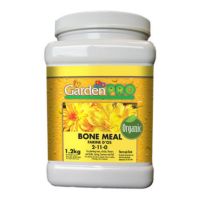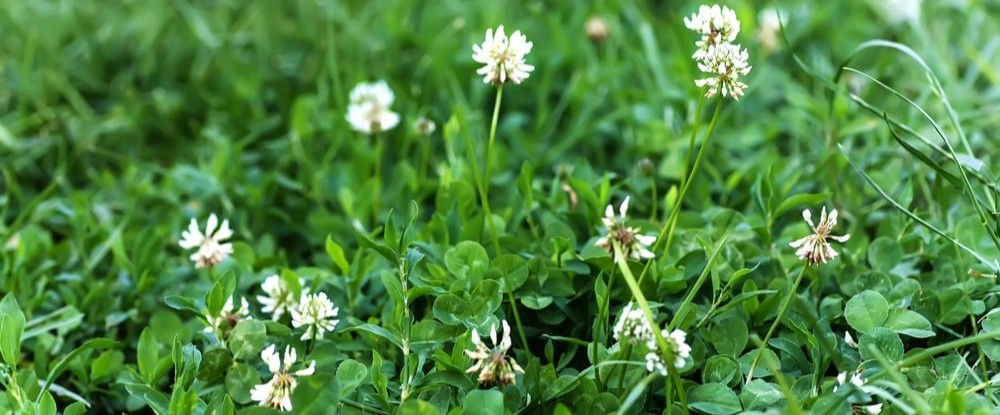
Fall Bulbs – What Should I Know?

Fall Bulbs – What Should I Know?
By Kyrah Whyte & Julia Bowen
Some bulbs are best suited for planting in the fall. This is usually done between late-September to November. Bulbs benefit from the cold ground temperatures and this makes for a better bloom in the spring.
TIPS & TRICKS
Moisture can cause bulbs to rot. A well-draining soil can prevent this – a peat moss or compost can help to remedy this. Similarly, a warm environment may cause these plants the begin their blooming process too early. Ensure that your bulbs are going in at the right time. It is also important to consider the location that you will be planting your fall bulbs. Sunny areas will help your bulbs do best.
When fertilizing the bulbs, it is key to choose a mix that is low in nitrogen. Some options include GardenPRO Bulb Food 2-9-6 and GardenPRO Bone Meal 2-11-0.
Popular flowers to plant in the fall include allium, tulip, amaryllis, daffodil, crocus, hyacinth, fritillaria, snowdrop, narcissus, and scilla bulbs.
Tulips
Which country producers most of the world’s tulips? If you guessed Holland, you’d be right!
Tulips are spring-blooming perennials. Their roots develop in the early fall and then go dormant until early spring. Leaves can start emerging from the soil as early as February or as late as May. These come in a variety of shapes including ruffled, single, double, fringed, and more.
Planting tips: plant bulbs about 5-7” deep and 4-5” apart, placing them in the ground with their pointy ends up. Water well once and wait until spring. After flowers have bloomed, do not trim foliage.
![IMG-7986[1]](http://apacheseeds.ca/wp-content/uploads/2022/09/IMG-79861.jpg)
Alliums
Allium flowers grow on the end of leafless stalks. Alliums are close relatives to onion, garlic and scallion. They are also known as “ornamental onions.” The clumps of bulbs can also be separated and replanted separately to multiply after flowering is over. These bulbs are relatively low maintenance and could be grown in a deep pot when needed, too.
Planting tips: plant bulbs about 4-8” deep and 6-8” apart. They thrive in full sun but will tolerate partial shade. Alliums are not fussy about soil, but they will not survive in soggy conditions.
![IMG-7978[1]](http://apacheseeds.ca/wp-content/uploads/2022/09/IMG-79781.jpg)
Crocus
Crocuses grow 2 to 4 inches tall. Their blooms offer a variety of different vibrant colours. Many produce strong fragrances that attracts pollinators. They are small clump-forming perennials. Saffron spice comes from saffron crocus flowers. The spice is the red stigmas of the flower. Each flower will only produce approximately 3 stigmas. These flowers generally come up 6-8 weeks after planting, but occasionally wait until the 2nd fall to appear.
Planting tips: plant bulbs 3-4” deep, pointy end up. After planting, water well. Plant them in groups or clusters rather than in a single line, about 3-4” apart.
![IMG-7980[1]](http://apacheseeds.ca/wp-content/uploads/2022/09/IMG-79801.jpg)
Daffodil (Narcissus)
Narcissus flowers, commonly known as daffodils are one of the most popular bulbs. They bloom for weeks on end, aren’t bothered by deer, thrive in both the garden and in pots, and are easy to plant and care for. These flowers are named after the Greek mythological story of Narcissus who fell madly in love with his reflection in the water. He was found next to a bright yellow flower, which later was named after him.
Planting tips: plant bulbs about 3-6” deep and 4-5” apart, placing them in the ground with their pointy ends up. Water well once and wait for spring. Do not cut foliage once they have bloomed.
![IMG-7983[1]](http://apacheseeds.ca/wp-content/uploads/2022/09/IMG-79831.jpg)
Hyacinth
Did you know Hyacinths belong to the same family as asparagus? It was also named after the Greek god Hyakinthos. These fragrant flowers make a great addition to flower beds and tend to be avoided by rabbits.
Planting tips: plant bulbs about 4-6” deep and 6” apart. They thrive in full sun but will tolerate partial shade. Ensure that soil is well-draining. After the flower has bloomed, cut off the stalk of the flower.
![IMG-7993[1]](http://apacheseeds.ca/wp-content/uploads/2022/09/IMG-79931.jpg)
Muscari
Muscari are commonly known as grape hyacinths due to the clusters of bell-shaped flowers. Rarely disrupted by deer and rodents, these make a great choice if you live near a forest or river valley. Muscari typically flower mid- to late-spring. These will multiply on their own.
Planting tips: plant bulbs about 4” deep and 3” apart. These can be planted in full sun or partial shade. Only water if conditions are particularly dry.
![IMG-7995[1]](http://apacheseeds.ca/wp-content/uploads/2022/09/IMG-79951.jpg)
Fritillaria
The variety Fritillaria Meleagris is also known as Guinea Hen Flower or Snake’s head fritillary. These varieties need only be planted a couple inches deep. It is important to note that the planting depth and spacing varies among some varieties. For larger varieties like Crown Imperials, plant 6″-8″ deep and about 12″ apart. On the other hand, the Fritillaria Michailowsky should only be planted about 4″ deep and 6″-8″ apart.
Since fritillarias vary so much in their planting instructions, a good habit is to plant them about 3 times deeper than the size of the bulb. Space these apart more than you would other bulbs. Just about double the planting depth should suffice.
![IMG-7996[1]](http://apacheseeds.ca/wp-content/uploads/2022/09/IMG-79961.jpg)
Snowdrop (Galanthus)
‘Galanthus’ means milk flower in Greek and gracefully describes these drooping, delicate flowers. Interestingly, a compound called galantamine can be extracted from these flowers. This is used in the treatment of Alzheimer’s disease.
Planting tips: plant bulbs about 3″ apart and 3″ deep. These may take over a year to be established, so don’t fret if your snowdrop does not flower for a while. Choose a spot that is partially sunny to shaded.
![IMG-7994[1]](http://apacheseeds.ca/wp-content/uploads/2022/09/IMG-79941.jpg)
Garlic
Fall garlic is hard necked and can be overwintered. It is commonly believed that fall garlic has a stronger flavour and grows larger than soft necked garlic. It is best to plant at least three weeks prior to first frost.
Planting tips: plant individual cloves, peels intact, pointy end up, 2 inches deep and 6 inches apart. A good rule of thumb is to not plant garlic until after the autumnal equinox.
![IMG-7988[1]](http://apacheseeds.ca/wp-content/uploads/2022/09/IMG-79881.jpg)
Related Products
Related
GardenPRO Bone Meal 2-11-0 1.2kg, 5kg

GardenPRO’s Bone Meal is a 2-11-0 mix derived from fish bone meal. Provides a great source of phosphorus for trees, shrubs, flowers, and bulbs.
GardenPRO Bulb Food 2-9-6 1.8kg

GardenPRO’s Bulb Food contains kelp and potash to help with winter survival. Use on all bulbs to help increase disease and pest resistance.
Sea Soil Compost 32L Bag

Sea Soil Original Compost is an excellent choice for amending your soil. It is OMRI certified and can help break up heavy clay soils, retain moisture, and provide necessary nutrients for growing plants. It contains a mix of 2 year composted fish and forest fines for a rich, dark compost with no unpleasant odour.




